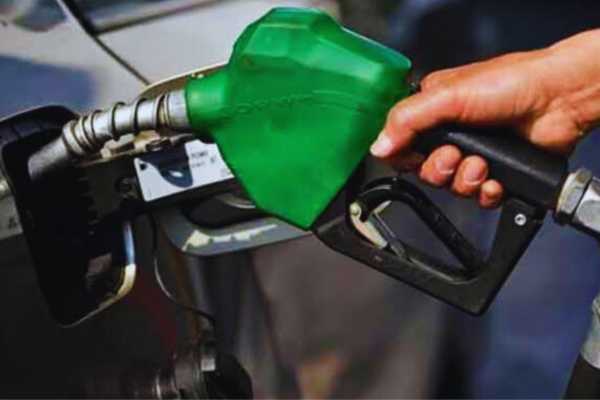Exploring Today’s Petrol Price In Pakistan
Today petrol price in Pakistan is Rs: 289.41 while price of High speed diesel is Rs: 285.56 and Light speed diesel price is Rs: 162.03 and kerosene oil price is Rs: 186.64. According to Govt of Pakistan policy petrolium products rate is revised after 15 days.

| Petroleum Products | Price |
| Petrol | 289.41/Ltr |
| High speed diesel | 285.56/Ltr |
| Light speed diesel | 162.03/Ltr |
| Kerosene Oil | 186.64/Ltr |
Past Petroleum Products Price/Litre
| Date | Petrol | High Diesel | Light Diesel |
| 01 April 2024 | 289.41/Ltr | 285.56/Ltr | 162.03/Ltr |
| 01 March 2024 | 279.75/Ltr | 287.33/Ltr | 162.03/Ltr |
| 16 February 2024 | 275.62/Ltr | 287.33/Ltr | 162.03/Ltr |
| 01 February 2024 | 272.89/Ltr | 278.96/Ltr | 162.03/Ltr |
| 16 January 2024 | 259.34/Ltr | 276.21/Ltr | 164.83/Ltr |
Implications for Economic Stability:
Understanding the dynamics of petrol price is crucial for assessing economic stability. Fluctuations in petrol, high-speed diesel, light-speed diesel, and kerosene oil prices can have far-reaching effects on various sectors of the economy. These fluctuations influence inflation rates, consumer spending patterns, transportation costs, and overall business operations.
When petroleum prices rise, transportation costs increase, leading to higher prices for goods and services. This can contribute to inflationary pressures, impacting consumers’ purchasing power and potentially slowing down economic growth. Conversely, when petroleum prices decrease, businesses may benefit from reduced operating costs, which can stimulate economic activity.
Key Takeaways:
Understanding the dynamics of petroleum prices is essential for individuals and businesses, empowering them to make informed decisions. Moreover, it plays a pivotal role in shaping economic policies and strategies. With petrol, high-speed diesel, light-speed diesel, and kerosene oil prices subject to regular revisions, stakeholders must remain vigilant and adaptable in navigating the ever-changing landscape of fuel markets. Keeping abreast of these fluctuations ensures preparedness and strategic planning for all involved parties.
Conclusion:
Understanding the current prices of petroleum products in Pakistan is essential for individuals and businesses alike, as they directly impact transportation costs, household budgets, and overall economic activities. With petrol priced at Rs: 289.41 per liter, high-speed diesel at Rs: 285.56 per liter, light-speed diesel at Rs: 162.03 per liter, and kerosene oil at Rs: 186.64 per liter, it’s crucial to stay updated on these rates for effective financial planning.
Understanding the dynamics of petroleum prices allows stakeholders to anticipate market trends, optimize resource allocation, and mitigate risks associated with fuel price volatility. By staying informed and proactive, individuals and businesses can navigate the challenges posed by fluctuating petroleum prices and capitalize on opportunities for sustainable growth.
FAQs (Frequently Asked Questions):
- Why does the government revise petroleum product rates every 15 days?
- The government revises petroleum product rates regularly to reflect changes in global oil prices, exchange rates, and domestic economic conditions. This ensures that fuel prices remain aligned with market dynamics while also managing fiscal considerations.
- How do fluctuations in petroleum prices affect the economy of Pakistan?
- Fluctuations in petroleum prices have far-reaching effects on various sectors of the economy, including transportation, manufacturing, and agriculture. Changes in fuel costs can impact inflation rates, consumer spending, and overall economic growth.
- What factors influence the prices of petroleum products in Pakistan?
- The prices of petroleum products in Pakistan are influenced by global oil prices, exchange rates, government taxation policies, transportation costs, and demand-supply dynamics in the domestic market. Geopolitical events and international oil production also play significant roles.
- How can individuals mitigate the impact of rising petroleum prices on their budgets?
- Individuals can reduce the impact of rising petroleum prices by adopting fuel-efficient transportation options, carpooling, using public transportation, and practicing energy conservation at home. Additionally, exploring alternative energy sources and investing in renewable energy technologies can help in the long run.
- Is there a correlation between petroleum prices and inflation in Pakistan?
- Yes, fluctuations in petroleum prices can contribute to inflationary pressures in Pakistan. Higher fuel costs often lead to increased transportation and production costs, which are passed on to consumers through higher prices for goods and services, thereby affecting the overall inflation rate.

